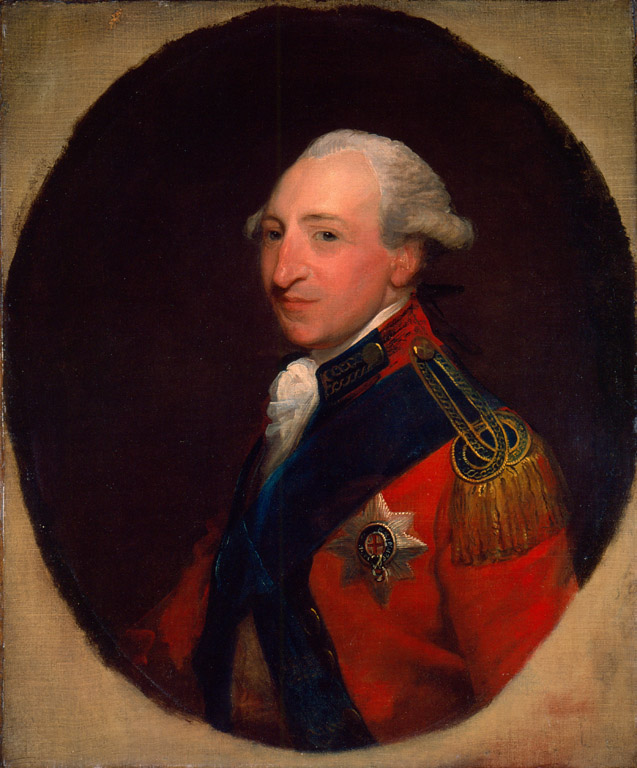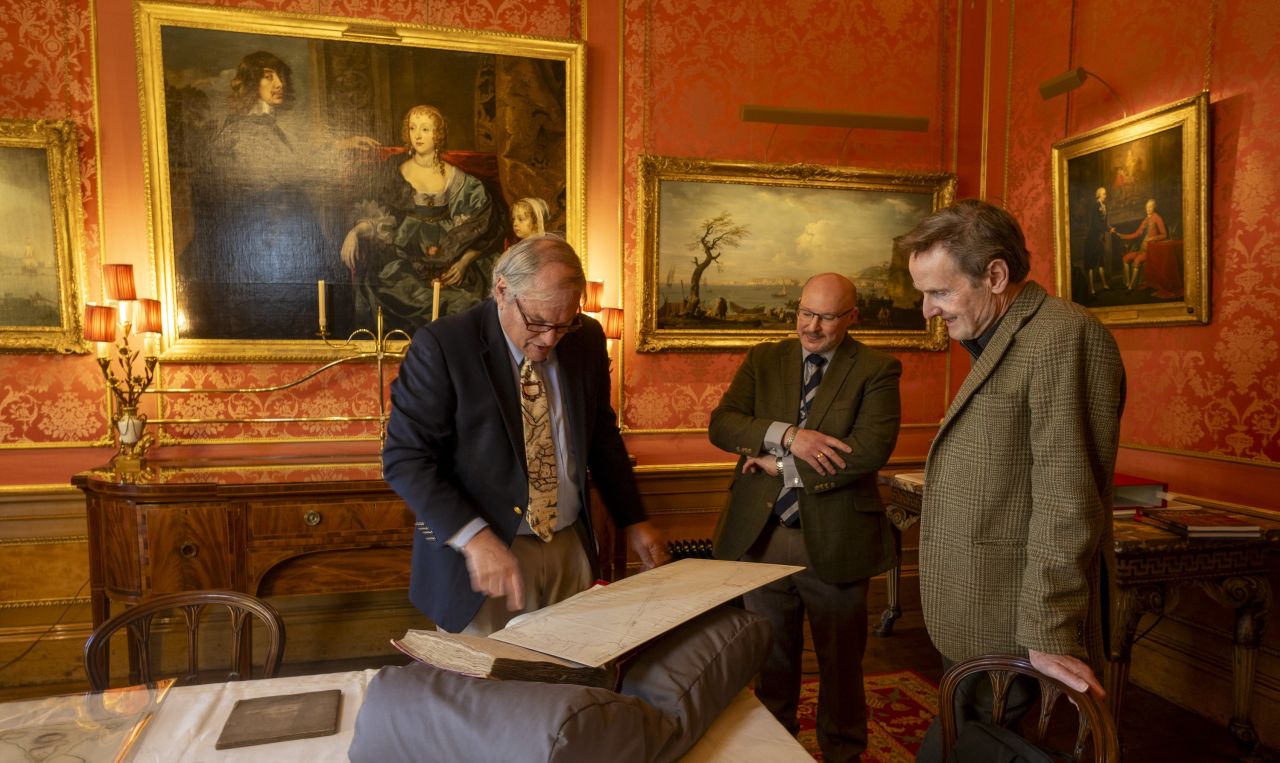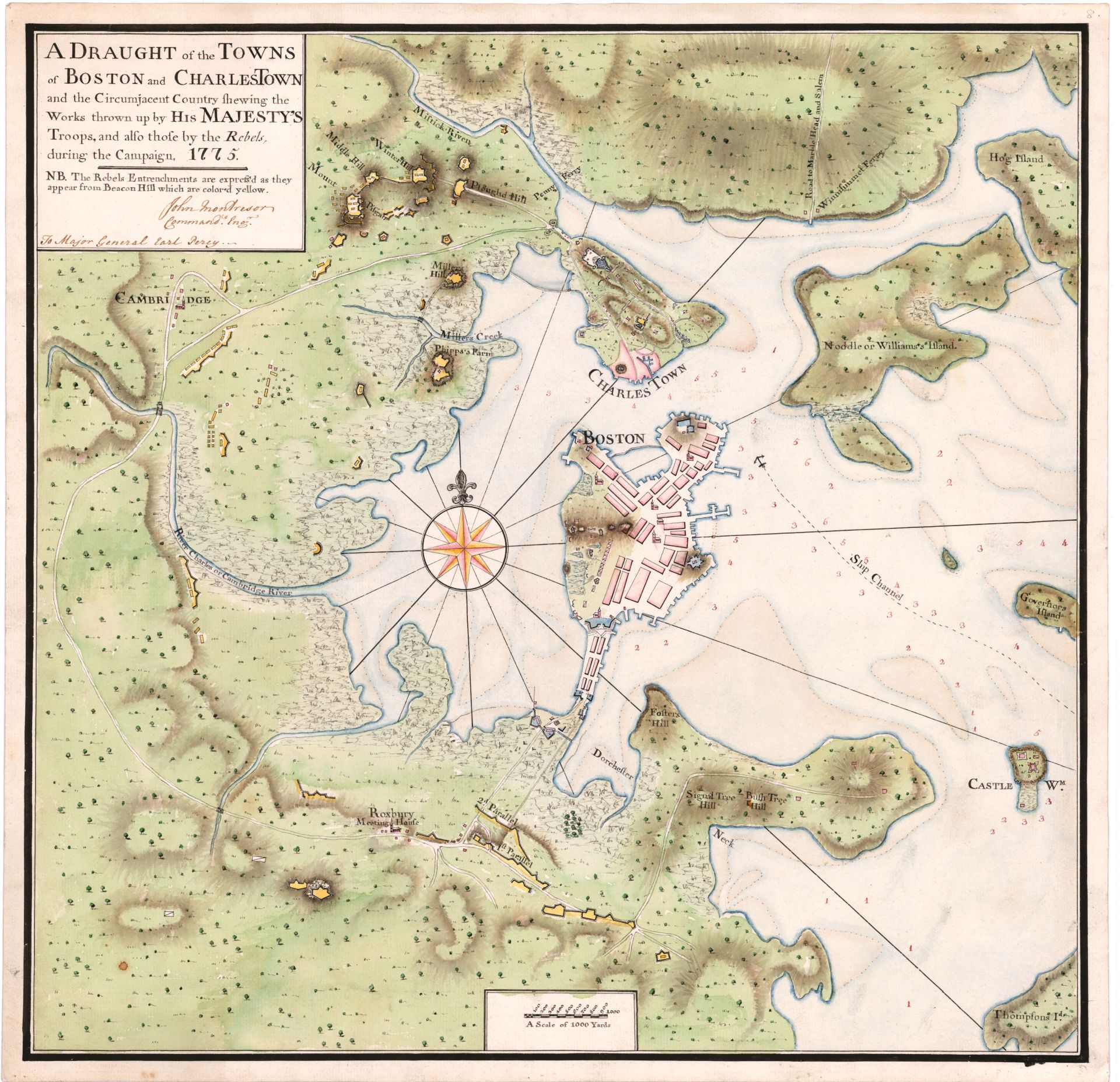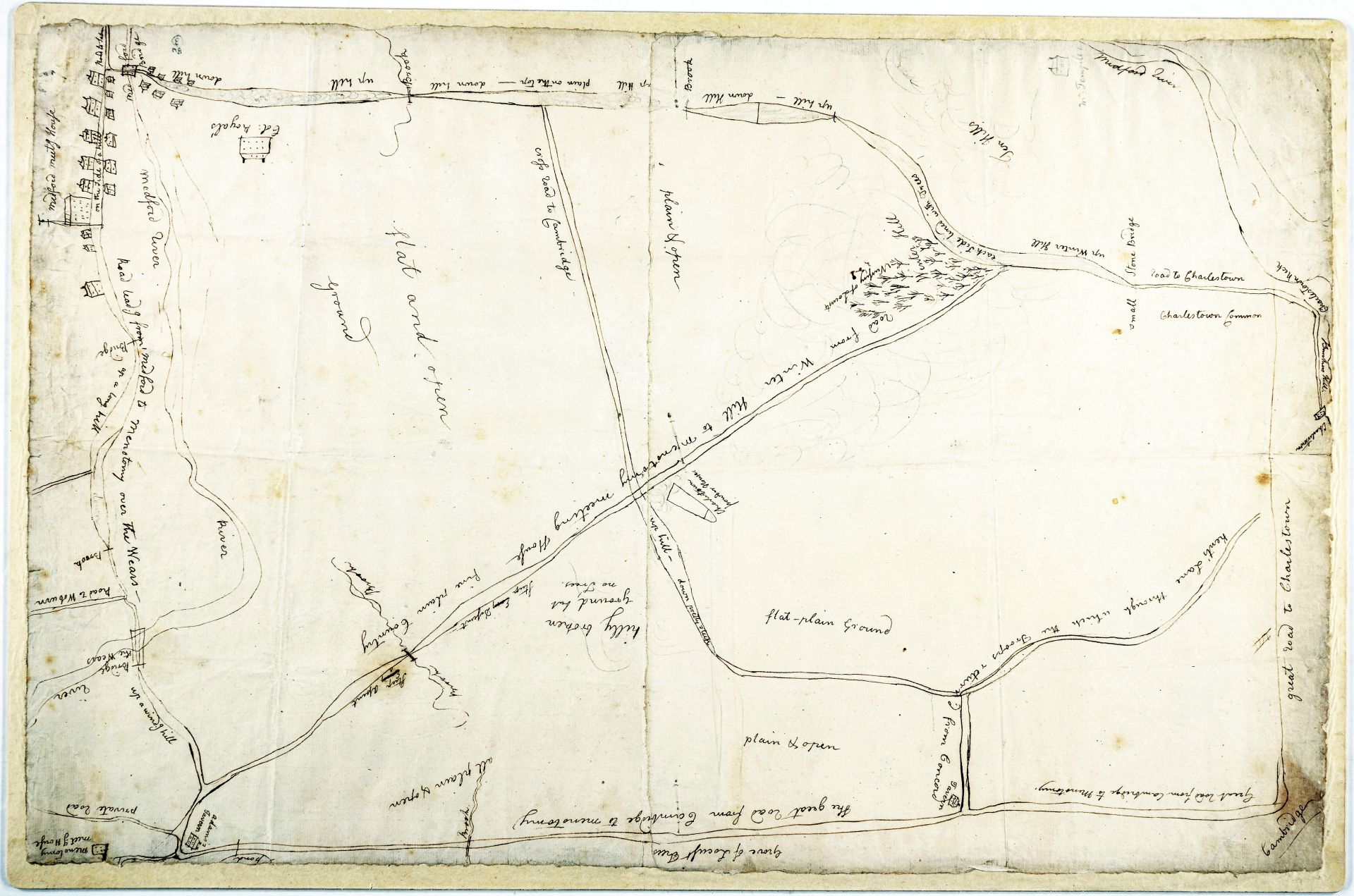Authors:
Historic Era: Era 3: Revolution and the New Nation (1754-1820s)
Historic Theme:
Subject:
Spring 2025 | Volume 70, Issue 2


Authors:
Historic Era: Era 3: Revolution and the New Nation (1754-1820s)
Historic Theme:
Subject:
Spring 2025 | Volume 70, Issue 2
I could scarcely believe what I was seeing. Despite generations of research and hundreds of books on the American Revolution, here was a critically important, yet previously undocumented treasure—a detailed map of the retreat of British troops from Lexington drawn by Lord Hugh Percy himself, the general who commanded those regiments.

Sketched within hours of the first significant armed conflict between Britain and its upstart colonies 250 years ago this month, the faint but detailed drawing appears to be the first record of the first battle of the American Revolution.
The map rested on a long table with an array of other extraordinary maps of the Revolution, many of them meticulously drawn and colored by hand. A team from American Heritage was deep in the interior of ancient Alnwick Castle near England’s Scottish border, talking with Ralph Percy, the 12th Duke of Northumberland and a direct descendant of General Lord Percy, about the dozens of maps his ancestor brought home from the American War of Independence. They had been stored for over two centuries in a wooden box, but the Duke's father had seen they were taken better care of. The wealth of hand-drawn maps would make any historian swoon.
“They are quite extraordinary,” the Duke said. “My father was very proud of them.”
A second map, dated April 19th, 1775, and hand-drawn by one of Percy's engineers, showed "the Place of the late Engagement between the King's Troops & the Provincials." It has numerous symbols for military units with labels such as "Militia" and "Provincials behind the walls" with thin lines of musket fire pouring out at "Col. Smith" and "Lord Percy." As is often the case with records created just after engagements, it includes numerous small errors.

On that morning in 1775, General Percy rushed with his reinforcements from Boston to support the King’s beleaguered troops who had marched to Concord in the middle of the night to destroy Colonial military supplies and, if possible, capture Sam Adams and John Hancock. General Thomas Gage, Royal governor of Massachusetts and commander of British forces in the colonies, had issued his top secret orders after receiving instructions from the King and Prime Minister Lord North to be more firm with the colonials after the Boston Tea Party.
Gage had told almost no one about the Concord raid, not even Percy, his second-in-command, until hours before. Lord Percy decided to take a walk in civilian clothes on the streets of Boston and was surprised to discover that word had gotten out. Speaking with a group of local men gathered on a corner, he learned that they already knew about the supposedly secret mission.
Some historians suspect that Gen. Gage’s beautiful and charming wife, the American-born Margaret Kemble Gage, may have tipped off her friend Joseph Warren about the coming attack. Margaret was known to have sympathies with the colonial cause. (After the fight at Lexington, she was sent back to England, and by some reports, Margaret and her husband remained estranged, but no hard evidence supports the possible intrigue.)

Sensing trouble for the raid on Concord, Gen. Percy departed Boston around 9:00 on the morning of April 19 with four regiments under his command, including the King’s Own, the Royal Irish, the Royal Welch, and Percy’s Fifth Foot regiment. They marched quickly the fourteen miles to Lexington, and on arrival were shocked to meet with Col. Smith’s men returning from Concord with many casualties. Percy immediately set up a defensive line east and west of Munroe's Tavern, and his two cannons fired to hold off the rebels.
After regrouping and treating the wounded at Munroe Tavern, Percy led the combined force of about 1,700 British regulars on the long road to Boston. There was persistent harassment from the Americans, as thousands of militia swarmed toward the fighting from all directions. To deal with the militia shooting from behind rocks, trees, and houses, Percy assigned flankers to try to clear the areas around the main forces marching on the road.
The day after the conflict, Percy wrote his father that he marched out to a town in the country and met the returning troops, who had been “sharply attacked & surrounded by the Rebels, having fired away almost all their ammunition. I had the happiness, however, of saving them from inevitable destruction, & arrived with them at Chastown, opposite Boston, ab' 8 o'clk last night, not, however, without the loss of a great many, having been under an incessant fire for 15 m[ile]s.”
